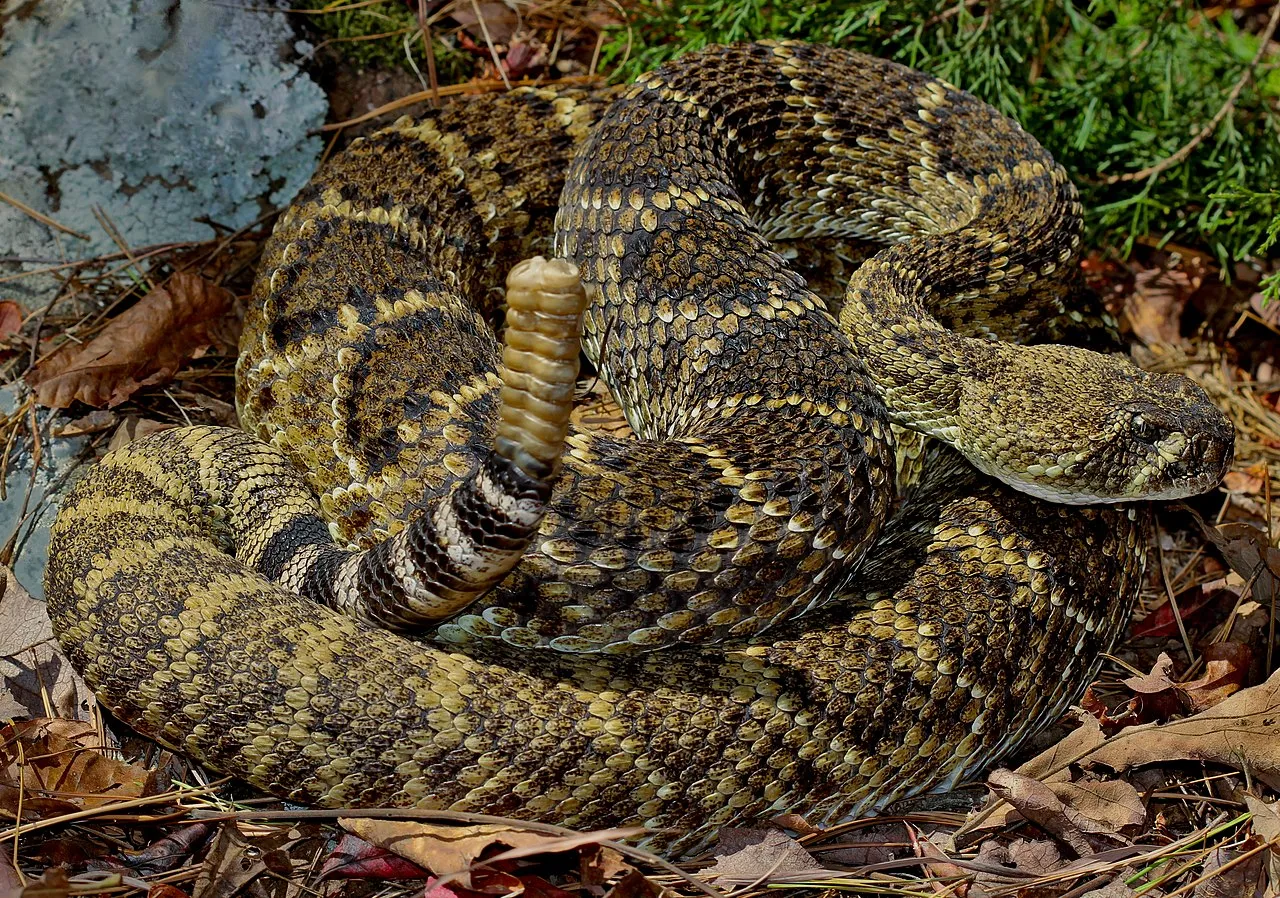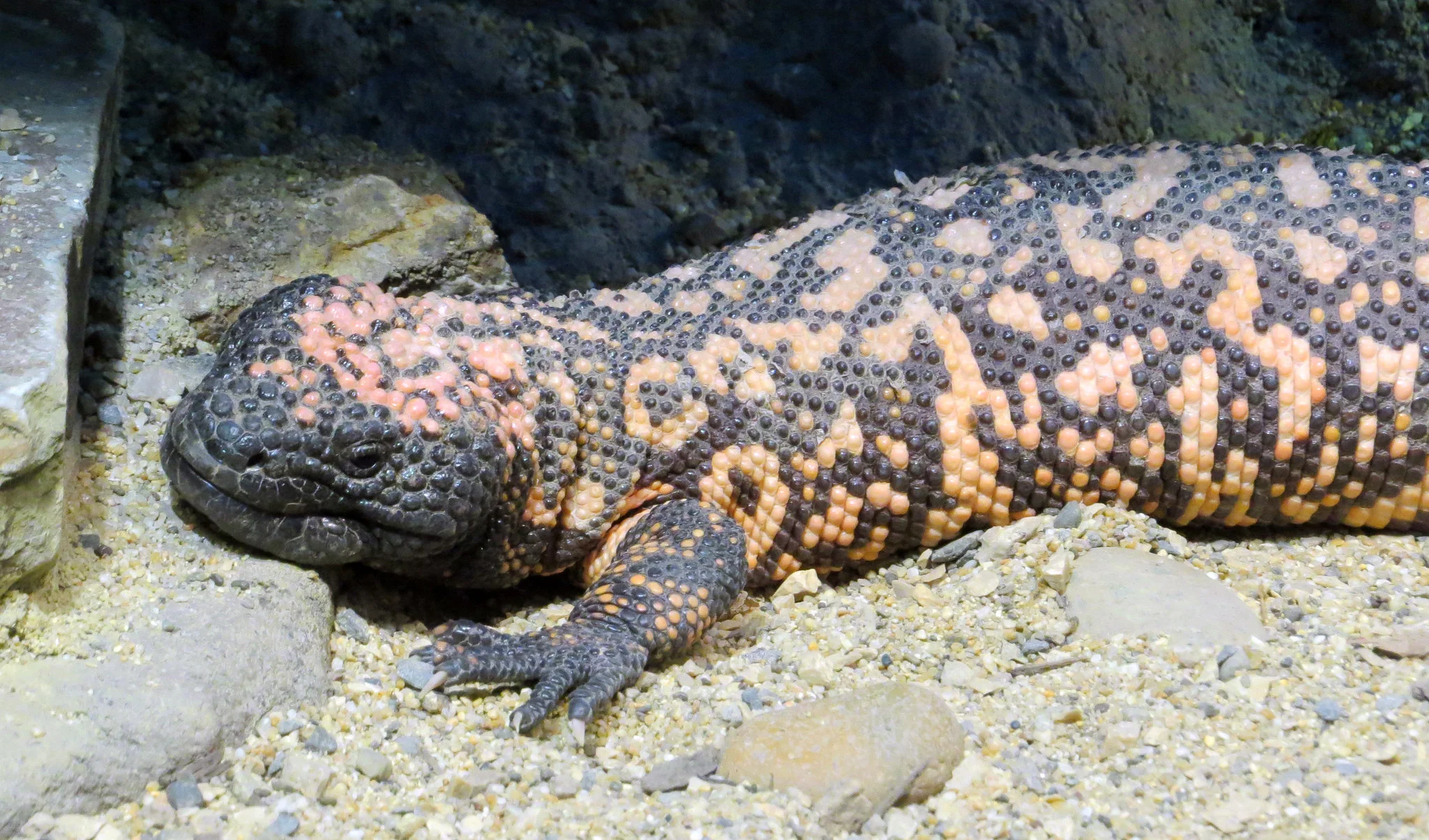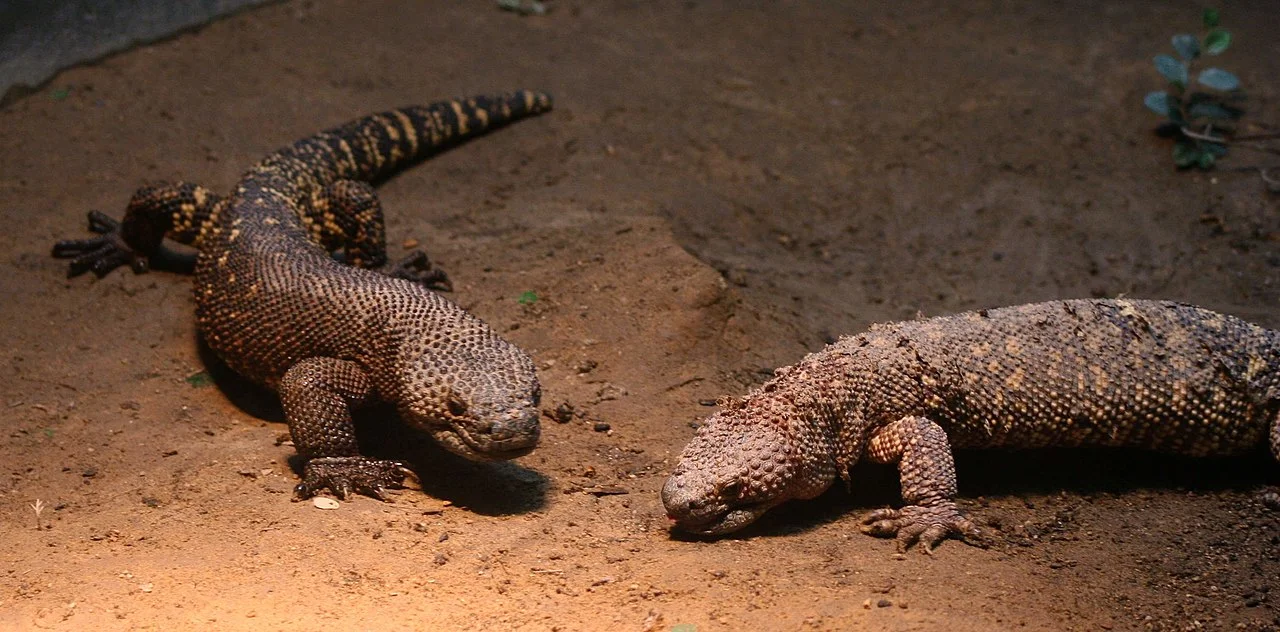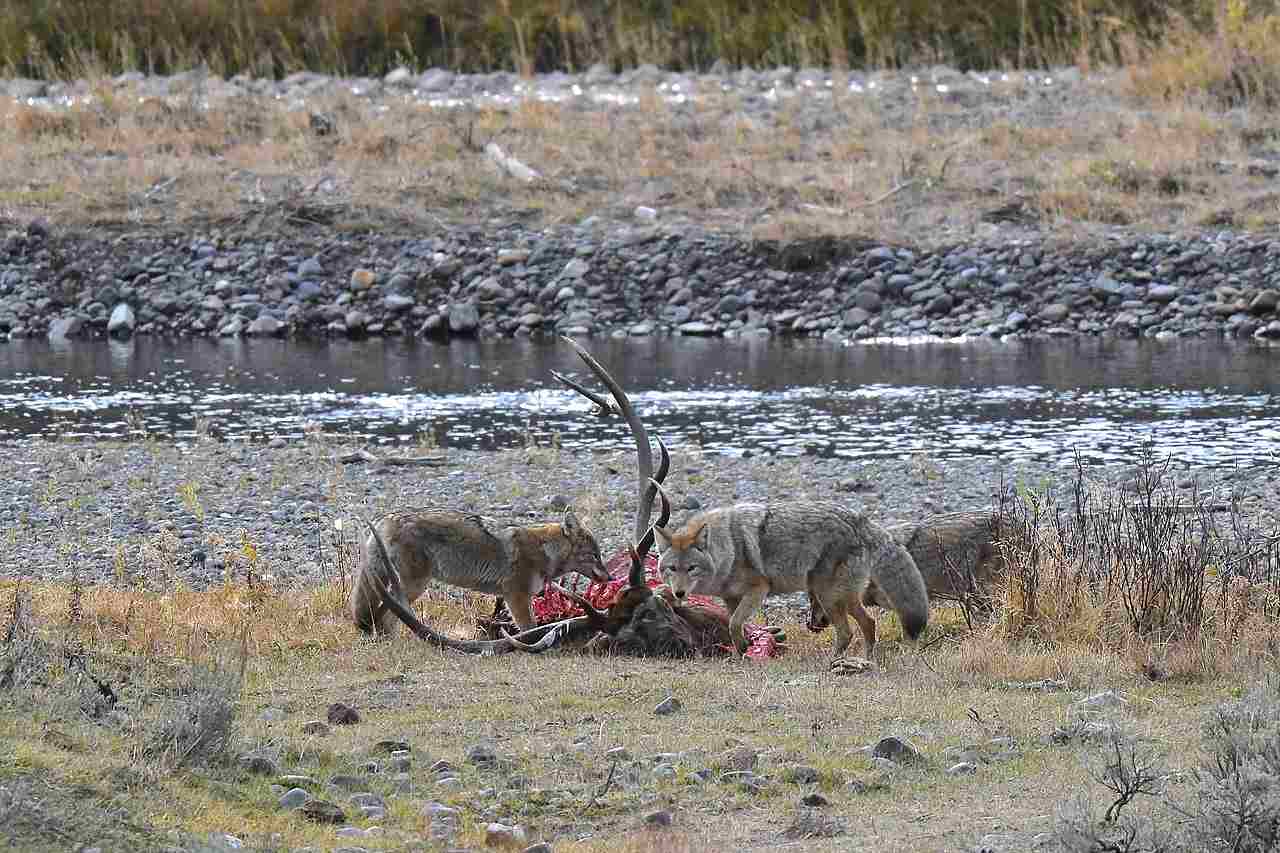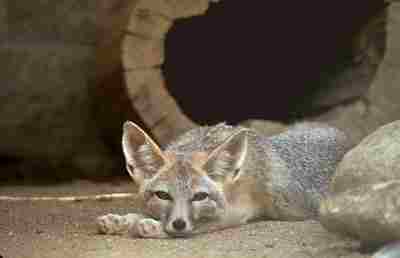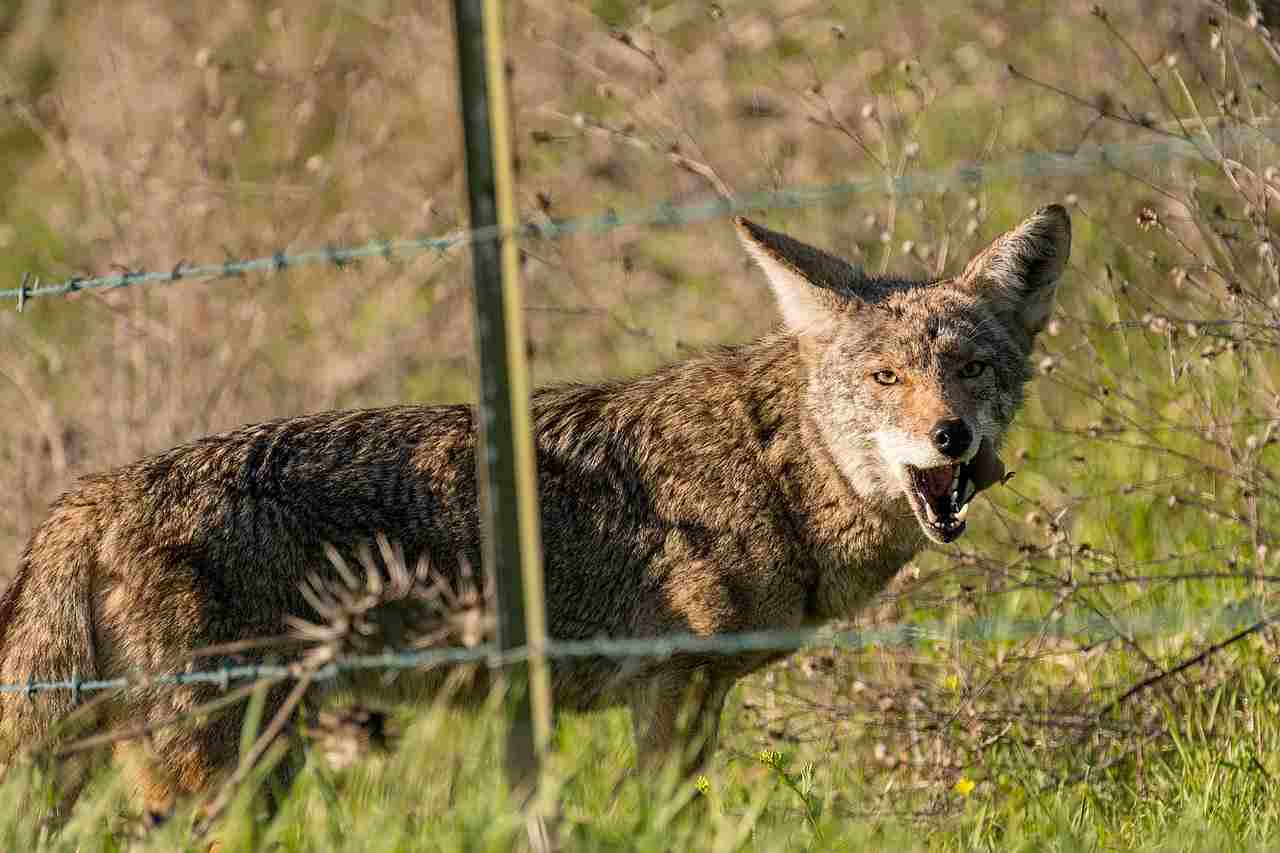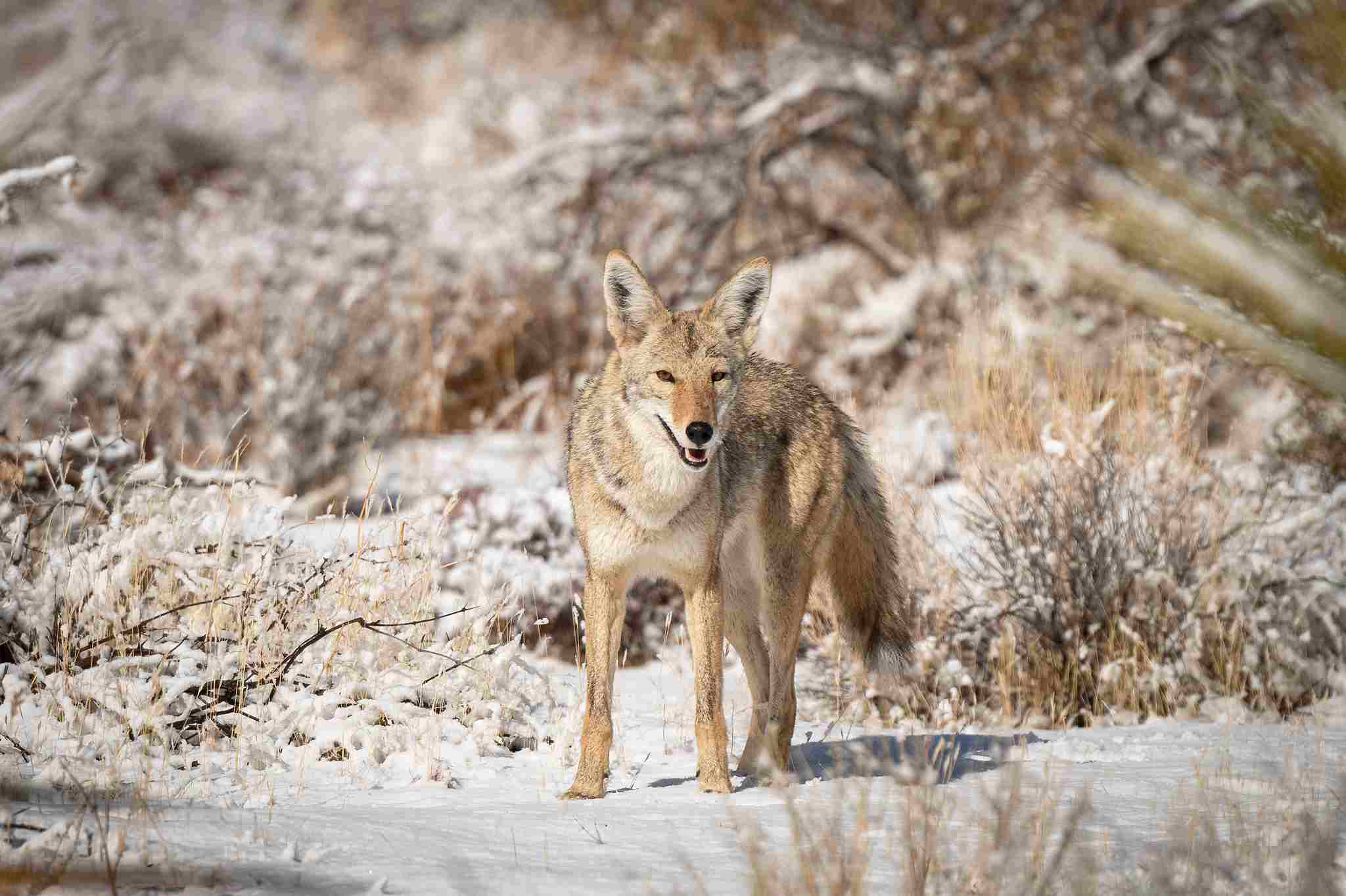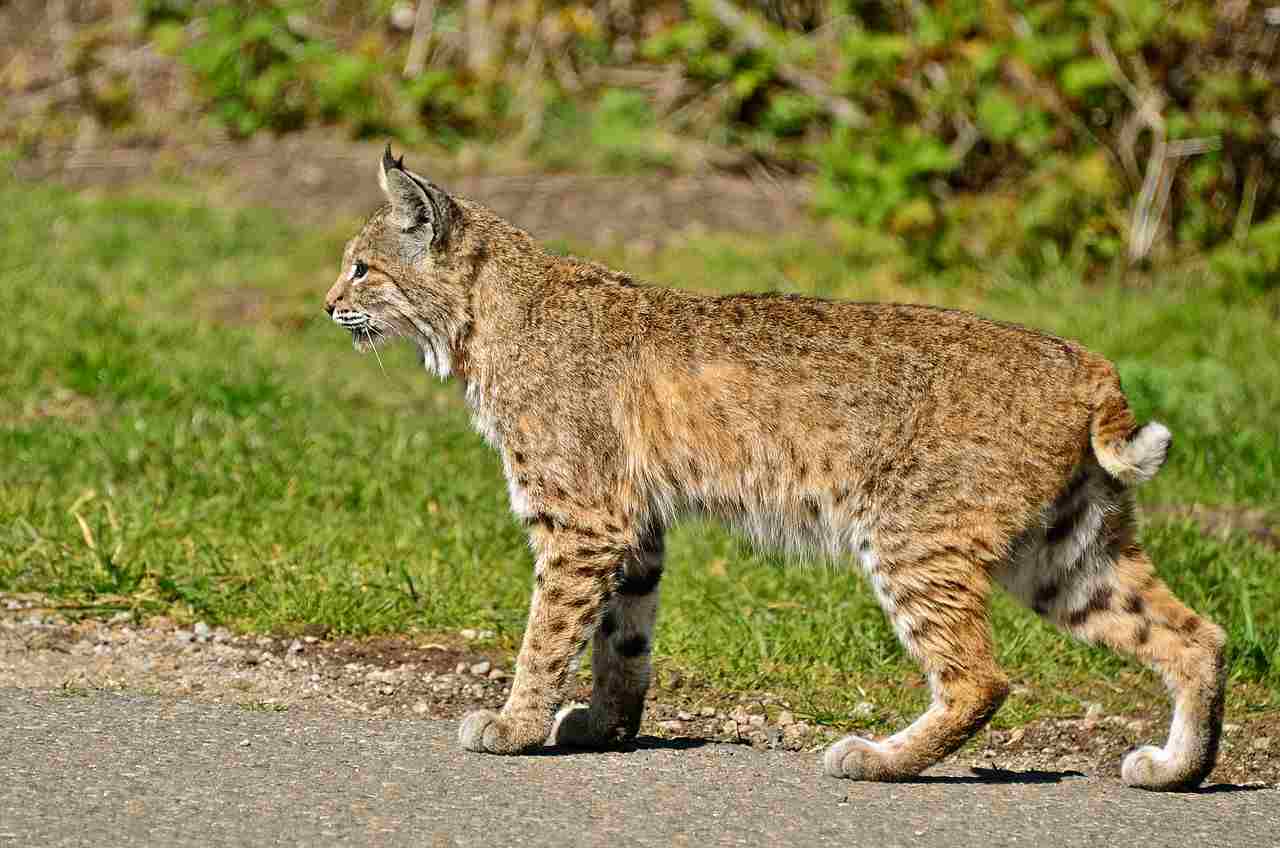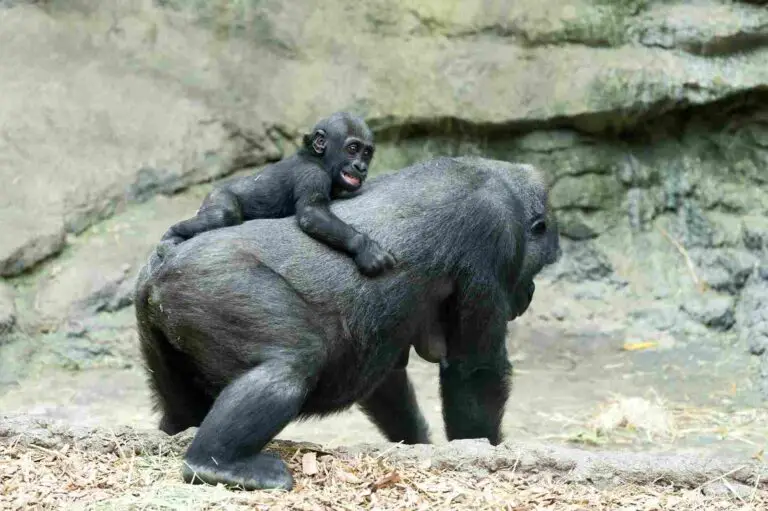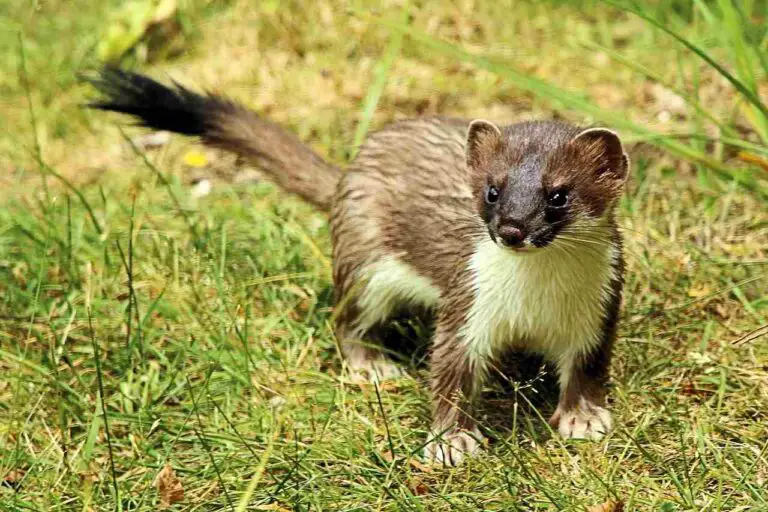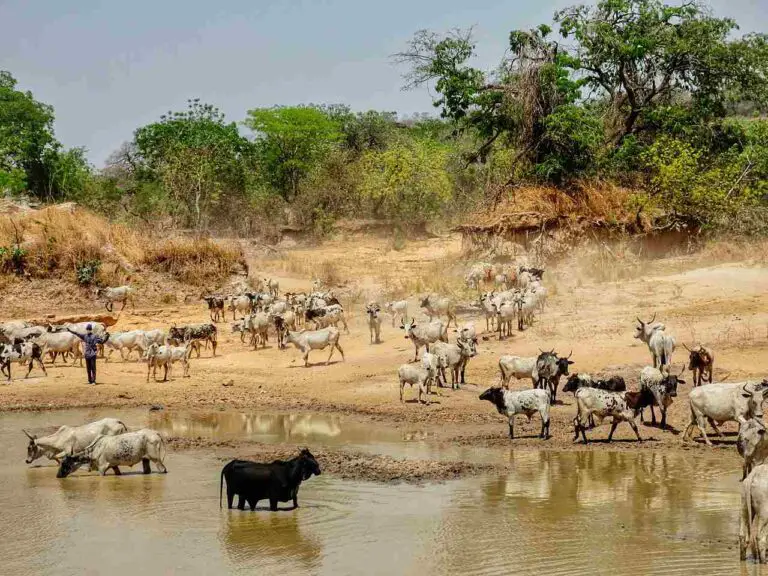25+ Dangerous Animals In Arizona And Their Characteristics
Examples of dangerous animals in Arizona are the Western Diamondback Rattlesnake, the Black Widow Spider, and the Gila Monster, each posing unique risks due to their venomous bites and stings. Additionally, the Mountain Lion and the Bobcat are larger predators that, while generally avoiding humans, can become aggressive if provoked or if they feel their territory is threatened. Smaller yet still potentially dangerous animals include the Brown Recluse Spider and the Bark Scorpion, known for their toxic venom. Coyotes and Javelinas, while typically not aggressive toward humans, can cause harm to pets or livestock if encountered. Overall, Arizona’s diverse wildlife requires caution and respect to ensure safe interactions.
1. Western Diamondback Rattlesnake
The Western Diamondback Rattlesnake (Crotalus atrox) is one of the most well-known and feared reptiles in Arizona. This venomous snake, recognizable by its distinctive diamond-patterned scales and rattling tail, is common in the southwestern United States and northern Mexico. Reaching lengths of up to seven feet, the Western Diamondback is the largest rattlesnake species in its range. It is responsible for the majority of snakebite incidents in the region, with a venom that can cause severe pain, tissue damage, and even death if not treated promptly. Although these snakes generally avoid human contact, they will defend themselves aggressively when threatened. When hiking or exploring in Arizona, it’s crucial to stay alert, watch where you step, and give these formidable reptiles plenty of space. If bitten, immediate medical attention is essential, as antivenom can greatly reduce the severity of the bite.
2. Black Widow Spider
The Black Widow Spider (Latrodectus mactans) is a notorious arachnid found in Arizona, identifiable by its shiny black body and the distinctive red hourglass shape on its abdomen. This small but venomous spider is known for its potent neurotoxic venom, which can cause severe muscle pain, cramps, nausea, and other symptoms, though fatal cases are extremely rare with prompt medical treatment. Black widows are typically found in dark, secluded areas such as garages, sheds, and woodpiles. While they generally avoid human contact, they may bite if disturbed or threatened. To reduce the risk of encounters, it’s advisable to use caution when reaching into hidden spaces and wear gloves when handling firewood or debris.
3. Gila Monster

The Gila Monster (Heloderma suspectum) is a large, venomous lizard native to Arizona and surrounding regions. Recognizable by its vibrant orange and black patterns, this slow-moving reptile is one of only a few venomous lizards in the world. While its bite is painful and toxic, it is rarely fatal to humans, as the Gila Monster’s venom delivery is slow and their temperament is generally docile. They are typically found in arid desert regions, feeding on small mammals, birds, and eggs. The Gila Monster is a protected species, and it’s illegal to harm or capture them in Arizona. If encountered, it’s best to admire from a distance, as their bite, though rare, can lead to significant discomfort and medical complications.
4. Bark Scorpion
The Bark Scorpion (Centruroides sculpturatus) is the most dangerous scorpion in Arizona, known for its potent venom and tendency to enter homes. This small, pale-colored scorpion is adept at climbing and often hides in trees, rocks, and crevices. Its sting can cause intense pain, numbness, muscle spasms, and, in severe cases, respiratory distress. While fatalities from Bark Scorpion stings are rare, young children and the elderly are at higher risk of severe reactions. If stung, it’s important to seek medical attention immediately, as antivenom is available to counteract the effects. Preventive measures such as sealing cracks, removing debris, and using scorpion-resistant techniques in home construction can help reduce the risk of encountering these venomous arachnids.
5. Arizona Coral Snake
The Arizona Coral Snake (Micruroides euryxanthus) is a small but venomous snake found in Arizona’s deserts. Despite its relatively diminutive size, this snake’s potent neurotoxic venom can be dangerous. It is distinguishable by its bright bands of red, black, and yellow, with the red bands always touching the yellow, a key feature to differentiate it from harmless look-alikes. Coral snakes are generally reclusive and non-aggressive, preferring to flee rather than confront. They often hide in leaf litter, under rocks, or within crevices, so it’s crucial to be cautious when moving objects in their habitats. Although bites from the Arizona Coral Snake are rare, medical attention should be sought immediately if bitten, as the venom can affect the nervous system and lead to respiratory failure without treatment.
6. Arizona Black Rattlesnake
The Arizona Black Rattlesnake (Crotalus cerberus) is a striking venomous snake found primarily in the mountainous regions of Arizona. Recognizable by its dark coloration, which can vary from black to dark brown with lighter crossbands, this snake is often found in forested areas and rocky outcrops. Despite its intimidating appearance, the Arizona Black Rattlesnake is generally non-aggressive and will rattle as a warning before striking. However, if threatened or provoked, it will defend itself. Its venom is hemotoxic, potentially causing severe pain, swelling, and tissue damage. When hiking or camping in areas where this snake is known to live, caution is advised, and if bitten, immediate medical attention is required.
7. Mojave Rattlesnake
The Mojave Rattlesnake (Crotalus scutulatus) is considered one of the most dangerous rattlesnakes in Arizona due to its highly toxic venom, which has both neurotoxic and hemotoxic components. This snake is typically found in desert regions, often hiding among rocks or underbrush. It’s recognized by its greenish or brownish coloration and the characteristic rattle at the end of its tail. Although it generally avoids human contact, it can be aggressive when threatened, striking with remarkable speed. The venom can cause paralysis, respiratory distress, and severe tissue damage. If bitten, prompt medical treatment with antivenom is essential. Caution is advised when exploring desert areas where the Mojave Rattlesnake is known to live.
8. Sonoran Desert Toad
The Sonoran Desert Toad (Incilius alvarius), also known as the Colorado River Toad, is a large amphibian native to Arizona. Although not inherently aggressive, this toad secretes a potent toxin from its skin, which can be dangerous to pets and curious humans. The toxin contains bufotenin and other compounds that can cause intense hallucinations if ingested, along with cardiac arrest in severe cases. While some have used this toxin for its psychoactive effects, it’s illegal to harvest or use it in most jurisdictions. The Sonoran Desert Toad is usually found in lowland desert areas, near rivers or streams. To avoid accidental poisoning, it’s best to avoid handling these toads and keep pets away from them.
9. Arizona Brown Spider
The Arizona Brown Spider (Loxosceles arizonica) is a venomous arachnid closely related to the more well-known Brown Recluse. Found in various parts of Arizona, this spider is often light brown with a violin-shaped mark on its cephalothorax. The Arizona Brown Spider’s venom is cytotoxic, potentially causing necrotic lesions, tissue damage, and, in severe cases, systemic symptoms like fever and chills. These spiders are reclusive by nature and typically reside in dark, undisturbed areas such as closets, garages, and basements. To minimize the risk of bites, it’s advisable to keep storage areas clean, use caution when reaching into dark corners, and avoid leaving clothing or shoes on the floor.
10. Hobo Spider
The Hobo Spider (Eratigena agrestis) is a venomous spider that has been found in parts of Arizona, though it is more commonly associated with the Pacific Northwest. It is a relatively large spider with a brown, mottled appearance and long legs. The Hobo Spider’s venom is believed to cause necrotic lesions in some cases, similar to those caused by the Brown Recluse, although the extent and frequency of these reactions are subject to ongoing debate among arachnologists. These spiders are generally found in undisturbed areas such as basements, crawl spaces, and woodpiles. While bites are rare, caution is advised when handling stored items or working in areas where Hobo Spiders might be present. If bitten, medical attention should be sought to monitor and treat potential complications.
11. Mountain Lion
The Mountain Lion (Puma concolor), also known as the cougar or puma, is a large and powerful carnivorous mammal found in Arizona’s wilderness areas. These elusive predators can weigh over 150 pounds and are capable of leaping great distances, making them formidable hunters. They primarily prey on deer but can pose a threat to livestock and, in rare cases, humans. Mountain Lions typically avoid human contact, but encounters can occur in remote areas or near the edges of urban developments. If you encounter a Mountain Lion, experts recommend staying calm, making yourself look larger, and backing away slowly without turning your back. In the event of an attack, fighting back is advised, as Mountain Lions have been known to retreat when faced with resistance. It’s also a good idea to travel in groups and keep children and pets close when hiking in areas where these predators are known to roam.
12. Bobcat
The Bobcat (Lynx rufus) is a medium-sized wild cat found throughout Arizona, often in desert scrub, woodlands, and mountainous regions. These adaptable predators are known for their tufted ears, short “bobbed” tail, and spotted coat. While generally not aggressive toward humans, Bobcats are opportunistic hunters that prey on small mammals, birds, and occasionally livestock or pets. Encounters with humans are rare, and they typically avoid populated areas, but there have been reports of Bobcats entering suburban neighborhoods in search of food or shelter. If you encounter a Bobcat, it’s best to make loud noises, avoid sudden movements, and back away slowly. To prevent Bobcat intrusions, secure garbage, bring pets indoors at night, and ensure outdoor enclosures are secure.
13. Javelina
Javelina (Pecari tajacu), also known as collared peccaries, are wild pig-like mammals commonly found in Arizona. They typically live in packs and are known for their stocky bodies, pig-like snouts, and tusks. Javelinas are not inherently aggressive, but they can be defensive if they feel threatened, especially when protecting their young. These animals often forage for food in suburban areas, leading to encounters with humans. If you come across a Javelina, it’s best to keep a safe distance and not provoke them. They can cause injury with their tusks if they charge, which can happen if they feel cornered or startled. To minimize conflicts with Javelinas, it’s advised to keep trash cans secured and avoid leaving pet food outdoors.
14. Coyote
Coyotes (Canis latrans) are common throughout Arizona, found in both rural and urban areas. These intelligent and adaptable predators are known for their distinctive howls and yips, and they typically hunt small mammals, birds, and reptiles. While Coyotes usually avoid human contact, they may enter suburban neighborhoods in search of food, posing a potential threat to pets and small livestock. Encounters with Coyotes are usually non-aggressive, but they can become bolder if they are regularly fed by humans or if they have lost their natural fear of people. To deter Coyotes, it’s best to secure trash cans, avoid leaving pet food outdoors, and keep pets inside or in secure enclosures. If you encounter a Coyote, make loud noises to scare it away and avoid direct eye contact, which can be interpreted as a challenge.
15. Brown Recluse Spider
The Brown Recluse Spider (Loxosceles reclusa) is a venomous arachnid that can be found in some parts of Arizona. Recognizable by the violin-shaped mark on its cephalothorax, this spider’s venom is highly cytotoxic and can cause severe skin necrosis, leading to painful ulcers that may require medical treatment. Brown Recluse Spiders are reclusive by nature and often hide in dark, undisturbed areas such as basements, closets, or storage boxes. While bites are rare, they can occur when reaching into hidden spaces without caution. If bitten, it’s crucial to seek medical attention immediately to prevent serious complications. To avoid encounters with Brown Recluse Spiders, ensure storage areas are kept clean and use gloves when handling objects in potentially infested locations.
16. Western Coral Snake
The Western Coral Snake (Micrurus tener) is a highly venomous snake found in parts of Arizona. It is similar in appearance to the Arizona Coral Snake, with bright bands of red, yellow, and black, but can be distinguished by the sequence and width of the bands. Coral snakes are known for their potent neurotoxic venom, which can cause respiratory failure and other serious complications if not treated promptly. Although these snakes are typically non-aggressive and prefer to flee, they can bite if provoked or handled. Encounters with the Western Coral Snake are rare, but if bitten, immediate medical attention is necessary, as there is no widely available antivenom for coral snake bites. When exploring areas where this snake may be present, caution is advised, and it’s best to avoid handling or disturbing them.
17. Sonoran Coral Snake
The Sonoran Coral Snake (Micruroides euryxanthus) is another venomous snake species found in Arizona, noted for its vibrant red, black, and yellow bands. Although it shares similar coloration with the Western Coral Snake, its red and black bands are typically wider and more distinct. This snake’s venom is highly neurotoxic, potentially causing paralysis and respiratory failure, but bites are rare due to its reclusive nature. The Sonoran Coral Snake is usually found in desert habitats, often hiding in leaf litter or beneath rocks. If encountered, it’s best to avoid handling or disturbing the snake to prevent bites. In the event of a bite, immediate medical attention is critical, as the venom’s effects can progress rapidly without treatment.
18. Western Screech Owl
The Western Screech Owl (Megascops kennicottii) is a small owl species commonly found in Arizona’s forests and woodlands. Despite its name, this owl doesn’t always screech, producing a variety of trilling and hooting sounds. It’s a nocturnal predator that feeds on insects, small mammals, and other birds. Although not typically dangerous to humans, the Western Screech Owl can be aggressive when defending its territory or nest. It has sharp talons and a strong beak, which it uses to catch prey and deter threats. If you encounter a Western Screech Owl, it’s best to keep a respectful distance, as sudden movements or attempts to interact with the owl can provoke defensive behavior. To observe these owls safely, consider using binoculars or observing from a distance during guided birdwatching tours.
19. Great Horned Owl
The Great Horned Owl (Bubo virginianus) is one of Arizona’s largest and most powerful owl species. Distinguished by its tufted “horns” and deep hooting calls, this owl is a formidable nocturnal hunter, capable of capturing prey as large as rabbits and skunks. While generally not aggressive toward humans, Great Horned Owls can be fiercely protective of their nests and young, using their sharp talons and strong beaks to defend against perceived threats. Encounters with these owls are most likely in forested areas or open countryside, where they build their nests in trees or on cliff ledges. If you encounter a Great Horned Owl, it’s best to keep a safe distance and avoid any attempts to interact with or disturb them, especially during nesting season. To observe these magnificent birds, use binoculars or consult with local birdwatching groups for safe viewing opportunities.
20. Mexican Free-Tailed Bat
The Mexican Free-Tailed Bat (Tadarida brasiliensis) is a common bat species found in Arizona, known for its long, narrow wings and tail extending beyond the tail membrane. These bats form large colonies, often roosting in caves or under bridges. Although they play a critical role in insect control, they can carry diseases such as rabies. Human interaction with bats should be avoided, and if bitten or scratched, immediate medical attention is necessary due to the risk of rabies. Observing Mexican Free-Tailed Bats from a distance is safe, especially during their evening flights.
21. Packrat
Packrats, or woodrats (Neotoma spp.), are common rodents in Arizona known for collecting various items to build their nests. While generally not dangerous, packrats can cause property damage by gnawing on wires, insulation, and household items. They can also carry diseases like hantavirus, posing health risks. To prevent packrat issues, it’s recommended to keep outdoor areas tidy, seal entry points to homes, and use traps or repellents if necessary. If you suspect a packrat infestation, consulting with pest control professionals is advisable.
22. American Kestrel
The American Kestrel (Falco sparverius) is a small but fierce bird of prey found in Arizona. Recognizable by its vibrant plumage and rapid flight, this falcon species preys on insects, small birds, and rodents. Although not typically dangerous to humans, American Kestrels can be aggressive when defending their nests. They may swoop at perceived threats, using their sharp beaks and talons. To avoid disturbances, it’s best to observe American Kestrels from a distance, especially during breeding season. These birds are valued for their role in controlling pest populations, and birdwatchers often enjoy observing them in open fields and along roadsides.
23. Peregrine Falcon
The Peregrine Falcon (Falco peregrinus) is one of the fastest birds of prey, known for its incredible diving speed and precision hunting. Found in various parts of Arizona, Peregrine Falcons primarily prey on other birds, diving at high speeds to capture their prey. While not typically dangerous to humans, they can be aggressive when protecting their nests. If you encounter a Peregrine Falcon near a nesting site, it’s best to keep a safe distance and avoid disturbing them. These falcons are a conservation success story, having recovered from near-extinction due to pesticide use, and they are often admired for their speed and hunting prowess.
24. Western Kingbird
The Western Kingbird (Tyrannus verticalis) is a medium-sized bird found in Arizona’s open areas and grasslands. Known for its aggressive behavior toward other birds, the Western Kingbird will defend its territory vigorously, often chasing away larger birds and predators. Although they generally pose no direct threat to humans, their territorial aggression can make them intimidating to other wildlife. To observe Western Kingbirds safely, it’s best to use binoculars and keep a respectful distance, especially during nesting season. These birds are valued for their role in controlling insect populations and are a common sight in rural and suburban areas.
25. Red-Tailed Hawk
The Red-Tailed Hawk (Buteo jamaicensis) is a large bird of prey common in Arizona. Recognized by its reddish tail feathers and broad wings, this hawk primarily preys on small mammals and birds. While not inherently dangerous to humans, Red-Tailed Hawks can be aggressive when defending their nests. They have been known to swoop at perceived threats, using their sharp talons and beaks. If you encounter a Red-Tailed Hawk near a nesting site, it’s best to keep a safe distance to avoid provoking an attack. Observing these majestic birds from a distance can be a rewarding experience, as they are a key part of the ecosystem and help control rodent populations.
26. Ferruginous Hawk
The Ferruginous Hawk (Buteo regalis) is one of the largest hawks in Arizona, distinguished by its broad wings and rust-colored plumage. These powerful birds of prey hunt small mammals like rabbits and squirrels and are known for their strong talons and keen eyesight. Although not typically dangerous to humans, Ferruginous Hawks can be protective of their nests and may attack if they feel threatened. To avoid disturbing them, it’s best to keep a safe distance from nesting sites and use binoculars for observation. The Ferruginous Hawk is a critical part of the ecosystem, helping to control small mammal populations, and is often admired for its striking appearance.
| Animal |
Key Characteristics and Dangers
|
| Western Diamondback Rattlesnake |
Venomous; diamond-patterned scales; hemotoxic venom; aggressive if threatened.
|
| Black Widow Spider |
Venomous; red hourglass on abdomen; neurotoxic venom; found in dark, secluded areas.
|
| Gila Monster |
Large venomous lizard; vibrant orange and black patterns; venomous but slow to bite.
|
| Bark Scorpion |
Small, pale scorpion; potent venom; climbs and enters homes; immediate medical attention required for stings.
|
| Arizona Coral Snake |
Bright bands of red, black, and yellow; potent neurotoxic venom; generally reclusive.
|
| Arizona Black Rattlesnake |
Dark coloration; venomous; often found in mountainous regions; hemotoxic venom.
|
| Mojave Rattlesnake |
Highly toxic venom; both neurotoxic and hemotoxic; found in desert regions.
|
| Sonoran Desert Toad |
Large amphibian; secretes potent toxin; can cause hallucinations and cardiac arrest if ingested.
|
| Arizona Brown Spider |
Venomous; cytotoxic venom; violin-shaped mark; reclusive in dark areas.
|
| Hobo Spider |
Potentially venomous; found in basements and crawl spaces; may cause necrotic lesions.
|
| Mountain Lion |
Large carnivorous mammal; can be dangerous if threatened; attacks rare but possible.
|
| Bobcat |
Medium-sized wild cat; generally not aggressive; can be defensive if provoked.
|
| Javelina |
Wild pig-like mammal; can be defensive; typically found in packs.
|
| Coyote |
Adaptable predator; may enter suburban neighborhoods; can be dangerous to pets.
|
| Brown Recluse Spider |
Cytotoxic venom; violin-shaped mark; reclusive in dark, undisturbed areas.
|
| Western Coral Snake |
Bright red, yellow, and black bands; highly neurotoxic venom; rare encounters with humans.
|
| Sonoran Coral Snake |
Similar to Western Coral Snake; potent neurotoxic venom; prefers desert habitats.
|
| Western Screech Owl |
Small owl; sharp talons; can be aggressive when defending territory.
|
| Great Horned Owl |
Large owl; tufted horns; protective of nests; attacks are rare but possible.
|
| Mexican Free-Tailed Bat |
Common bat species; can carry diseases like rabies; avoid direct interaction.
|
| Packrat |
Rodent; can cause property damage; potentially carries hantavirus; avoid direct contact.
|
| American Kestrel |
Small bird of prey; aggressive when defending territory; best observed from a distance.
|
| Peregrine Falcon |
Fastest bird of prey; aggressive when protecting nests; observe from a distance.
|
| Western Kingbird |
Medium-sized bird; territorial aggression; observe from a distance.
|
| Red-Tailed Hawk |
Large bird of prey; may attack when defending nests; use binoculars for observation.
|
| Ferruginous Hawk |
Large hawk; protective of nests; avoid disturbing them; best observed with binoculars.
|
